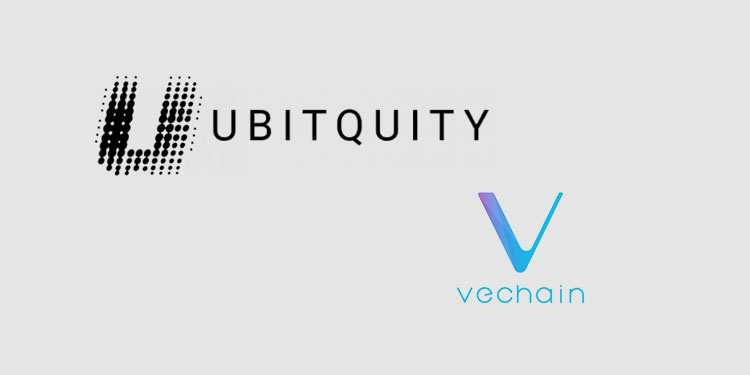The eastern superpower of China has demonstrated astonishingly rapid economic growth over the last few decades and now has a GDP second only to the USA. This development has come primarily from within, as inward-looking politics have fostered the growth of domestic companies.
This is a country that tends to prefer its own, and the ‘Great Firewall of Chain’ has kept out even the biggest of Western companies, which makes the Chinese internet look very different from our own — with homegrown tech companies like Baidu, WeChat and TaoBao replacing the Google, Whatsapp, and Amazon of the west.
The digital economy in China represents over 30% of GDP, and with a top-down political structure that allows for extremely quick change, technological innovations like mobile payments have been implemented much faster than in the United States.
As for blockchain, despite FUD over-regulation and the ICO Ban, recent news indicates that the government is keen to support the blockchain industry through regulation that will encourage healthy growth and prevent the ‘hot air’ projects that are harmful to the entire community.
Because this market is so promising, we’ve looked at four cryptocurrencies that are leading the charge to build the blockchain future in China.
NEO (NEO) — Smart Economy
Starting life as Antshares in 2015, China’s first open source blockchain project rebranded to NEO in August 2017 and is commonly known as the ‘Chinese Ethereum’. However, there are significant differences between the two. While both are ecosystems for smart contracts, NEO is younger and further behind in its development but has some key advantages over its western counterpart.
Ethereum offers smart contracts, which has helped it to become one of the most valuable cryptocurrencies, and NEO offers what it calls ‘Smart Economy’, which anticipates the emergence of an entire digital economy based on the storage and exchange of digital assets.
These could also be physical assets mirrored in the digital world that are protected by law and verifiable by the second facet of NEO’s vision; ‘Digital Identity’.
Digital Assets + Digital Identity + Smart Contracts = Smart Economy
In addition to this extra layer of functionality, NEO claims to be able to handle one thousand transactions per second compared to fifteen with Ethereum. As a NEO holder, you receive dividends in the form of GAS, this is the utility token which is paid to deploy Smart Contracts and prioritize transactions.
For developers, the advantage of NEO is that smart contracts can be written in any language supported by the .NET framework, which has not only helped them cooperate with Microsoft but also helped grow a team of close to 100 developers spread all over the world. This is not the case with Ethereum, which requires developers to learn the specified language ‘Solidity.’
As for partnerships, NEO does not have direct cooperation with the Chinese government but has strong indirect links through another private company ‘Onchain’ that is led by NEO’s founders, Da Hongfei and Erik Zhang. Onchain is funded by a famous financial group in China, Fosun, and is working on blockchain projects with the Chinese government and large enterprises.
From an investment perspective, NEO was the only coin to be rated A- by the Weiss Ratings Agency and has lots in store for 2018, including a decentralized exchange based on the NEO blockchain (NEX).
Nebulas (NAS) — The Decentralized Search Framework
The central value proposition of Nebulas is to enable searching across different blockchains and decentralized apps, hence it is known as the ‘Google of Blockchain’. As blockchain grows and becomes more prevalent, we can expect internet infrastructure to be rebuilt in a more decentralized way, and Nebulas aims to implement a ranking system and search function for this framework.
However, it is not just a ‘blockchain search engine’.If you look beneath the hype then you will see a third generation blockchain platform that could be one of the first to successfully launch mainnet. Although there are other Blockchain 3.0 projects operating in a similar space, like Cardano and EOS, they are still very much in the early stages of development.
The premise of blockchain 3.0 is a smart contract platform that can handle a significantly greater amount of transactions per second than 2.0 platforms like Ethereum. So you can kiss goodbye to crypto kitties clogging up the network, as blockchain 3.0 networks are more scalable, and also more interconnectable with other blockchains.
Nebulas also plan to create the first lightning network wallet, which would give the potential of processing a million transactions per minute, in the same realm as institutions like Visa and Paypal.
To achieve this ambitious vision, they have assembled a solid team that consists of developers from Google and Ali Baba, and two of the co-founders of NEO, all headed up by Hitters Xu who is one of the founders of the original blockchain community in China. Some of the brightest minds are coming together to drive this project forward and it appears to be succeeding, as the roadmap for 2018 is currently ahead of schedule, with mainnet launch due in Q1 2018.
The coin is currently only available on a few small exchanges like Etherdelta and Huobi, and when it hits major platforms like Binance the buying volume is likely to soar. With such strong fundamentals and a current market cap of around three hundred million USD, there is still plenty of room for growth.
Matrix AI Network (MAN) — Artificial Intelligence on the Blockchain
If you thought Nebulas had some lofty ambitions, then wait till you hear about Matrix AI Network, who aim to make smart contracts available to anyone through their native language. This will be achieved through a combination of artificial intelligence and blockchain technology; an exciting intersection of ideas that relies on NLP (Natural Language Processing) to interpret information via a computer — which is then put directly on the blockchain to form a self-writing smart contract.
This would allow anyone to easily create smart contracts for legal agreements, exchanges of money, or whatever they choose. Matrix requests users to specify the core requirements of the smart contract, and then uses AI to automatically write a script that becomes an executable program. This could help mainstream adoption by creating a user-friendly experience, which is one of the key challenges facing crypto as a whole.
While this might seem like something out of a science fiction novel, a quick look at the people involved is enough to make you think that this could be a real step towards an artificially intelligent society. The team includes award-winning AI Scientist Professor Steve Deng, who has a strong track record in the fields of machine learning and data analytics, and some very experienced developers, who are currently setting up offices worldwide including in NYC and Silicon Valley.
The senior vice president, John Zhu, has worked with the government on many of China’s space exploration projects, and is also the Executive Projects Expert for China’s biggest ever infrastructure project; the One Belt One Road initiative, which has led many to speculate if $MAN will provide blockchain capability for this project. One application has already started at the Beijing Cancer Hospital, where the team is working on a system that uses AI to assist in diagnosis. The foundation is also advised by one of the co-founders of the Lenovo group, Michael Lai-Yick Ng, who has over 35 years of experience in the tech sector in China.
In terms of investment, $MAN is fresh on the scene and has a very low market cap. It is only available on one tiny exchange (IDEX), and with more due to come in March, it is worth keeping a close eye on.
VeChain (VEN) — A Trust-free and Distributed Business Ecosystem
I’d be surprised if you haven’t heard about $VEN. The secretive whispers of The Coca-Cola Kid and constant shilling on the cryptocurrency subreddit have given this coin a reputation that precedes itself, but for good reason.
VeChain is aiming to create a trust-free business ecosystem on the blockchain, and are integrating a range of technologies that are tailored to several different sectors. These include RFID chips for tracking supply chains, ID tags, and NFC sensors for the counterfeit goods industry, which alone is worth nearly half a trillion dollars globally.
The VeChain blockchain is based on Ethereum, and rather than technical vision what makes this coin stand out is partnerships. The team seems to be very capable of securing deals with global players, and have forged working partnerships with companies like Kuehne + Nagel, one of the biggest logistics companies in the world, PricewaterhouseCoopers, and BMW.
The team is led by Sunny Lu, former CIO at Louis Vuitton, and consists of high-level directors with a wealth of shared experience in finance, IT security, and blockchain governance. The vision, the partnerships, and the leadership of the team all scream success, and this has been picked up by prominent American investors Like Jim Breyer — who sits on the advisory board.
As for future plans, VEN is currently undergoing a much-hyped rebrand, which means Vechain tokens will now generate a dividend coin called THOR, similar to NEO’s GAS, that can be used within transactions on decentralized apps.
Disclaimer: The author has invested in all of these projects, but would encourage you to exercise due diligence before doing so. This is not financial advice, and investing is entirely at your own risk.






















